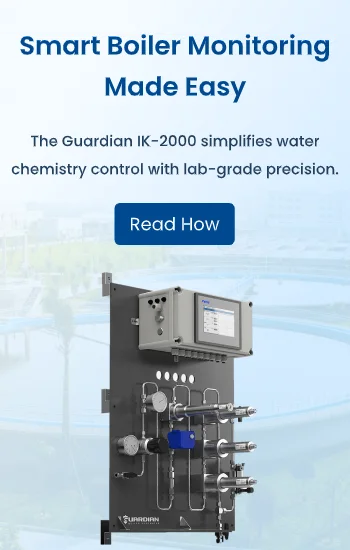Returning condensate to boiler feed is an effective way to reduce the energy input required to raise steam. It has the added benefit of reducing water and chemical use also.
How does it work?
When a kilogram of steam is used in a heating process other than direct injection, e.g in a jacketed pan or a heat exchanger, its Latent Heat (Enthalpy of Evaporation) is rapidly given up to the process. At low to medium pressures commonly used in such processes, there is around 2000 kJ in every kg of steam that is transferred to the process and the steam reverts to a liquid state – condensate- at the same temperature as the steam.
In the past, there was little incentive to recover this water nor the energy within it, but times have changed. Not only is the recovered energy of real value but so is the water itself. Condensate is essentially distilled water, or in the case of boilers using a volatile chemical program (e.g. neutralising amines, DEHA oxygen scavenger), distilled water containing expensive treatment chemicals.
It is low TDS water that can be thought of as already having been treated. You could also think of it as water with money in it! Money in the form of energy, chemicals and a valuable purification step. When condensate joins make-up water in the feed tank the overall feed water TDS is lowered. This extends the cycles of concentration that are possible in the boiler, reducing the blowdown requirement, saving a bit more energy & chemical again. Win Win!
So why isn’t everybody returning their condensate to the boiler?
Well, many already are, but returning condensate for another go-around is not entirely without risk.
Take for example a rendering plant… There is an inherent risk that if a leak forms, tallow (i.e. oil) may find its way into the condensate and back into the feed tank and boiler. In the boiler, it will react with Caustic Alkalinity and turn into soap. The boiler water will begin to foam uncontrollably and lead to a serious carryover problem, contaminating the steam and creating potentially dangerous situations in the plant such as violent water hammer.
Sugar mill condensate if contaminated with sugar will basically caramelise inside the boiler, decompose to organic acids that upset boiler chemistry and cause the buildup of undesirable tar-like deposits on the waterside.
How do you detect contamination of condensate to minimise these risks?
A conductivity controller in the lower ranges is effective at detecting any contamination of an ionic nature – salts, boiler water carryover, contamination from most food products that may be heated by direct injection or heat exchangers. If any of these find their way into the condensate they will cause the Total Dissolved Solids (TDS) of what should be highly pure distilled water to spike.
Good quality condensate should have a TDS in the order of 10ppm. It can be even less when the system is in really good order with good steam separators and no corrosion issues. Just a little boiler water, which generally has a TDS of 1500 – 3000ppm, carrying over into the steam side will cause a rapid spike in TDS of the condensate. A well-located conductivity sensor will detect this and can signal the condensate to be diverted away from the feed water tank until the contamination has passed.
You certainly can’t use any old TDS sensor and controller to do this.
Emec has a line of stainless steel conductivity probes with integral PT100 temperature sensors which can handle 15 bar and 200°C temperatures, more than sufficient for the condensate side of the steam systems you will find in around 90% of plants in Australia. Emec’s controllers are perfectly matched to these sensors, and can automatically compensate for the measured temperatures and maintain accurate and repeatable readings. The DIN rail mount Emec DIN DIG CD and panel mount Emec JA PRO CD are compact enough to fit neatly inside or in the door of your average boiler control panel.
It is important to note that condensate conductivity monitoring is not suitable for all types of contamination. In particular, the first two examples are given – tallow and sugar are not easily detected by conductivity until it is essentially too late.
By the time the resulting soap foam or decomposed sugars (which are detectable by TDS measurement), are seen by the probe – the damage is already well underway. An experienced boiler attendant will have noticed the carryover (water hammer) or smelled the caramel by then anyway!
CWC Sales Freecall: 1800 137 954 or email at sales@cwc.com.au





